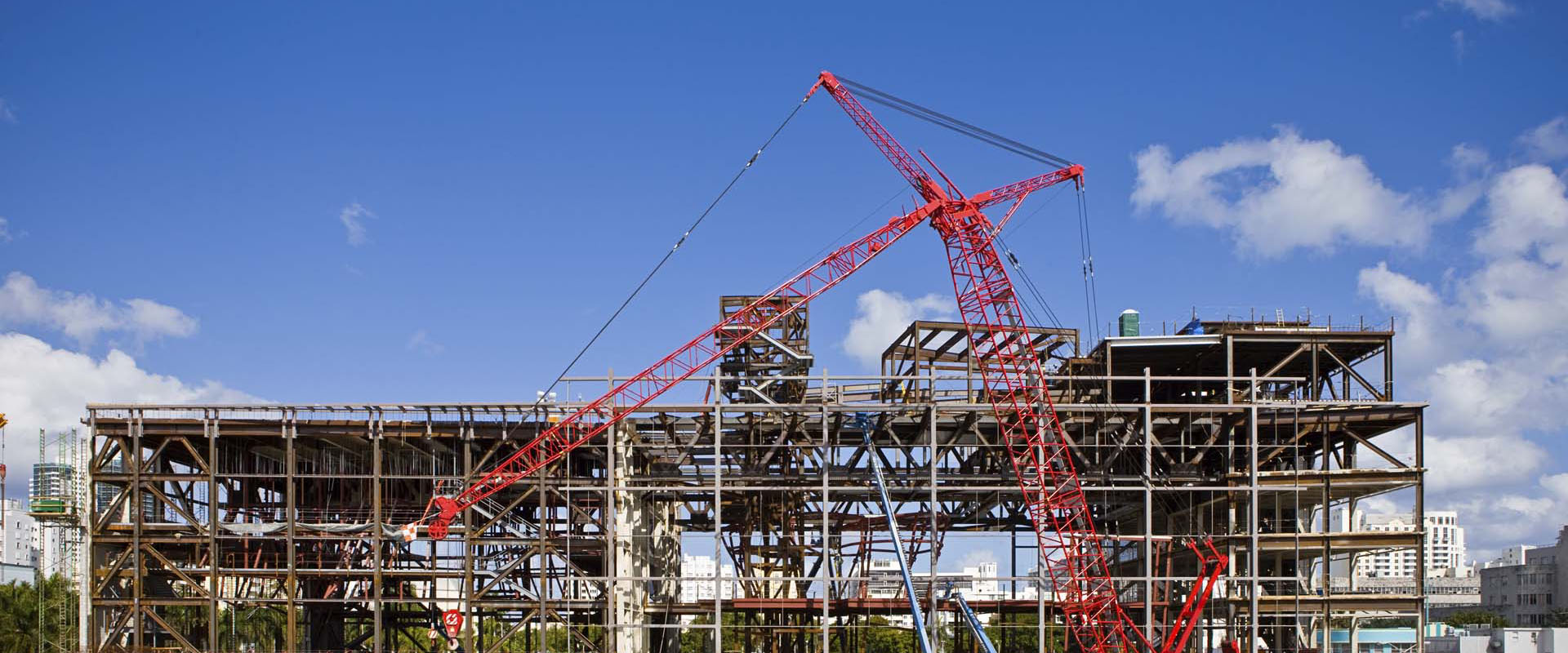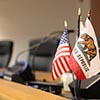Progressive Design-Build Authority Has Been Expanded for Local Public Agencies

February 2024
Number 11
The start to 2024 brings with it some exciting changes regarding the accessibility of the progressive design-build (PDB) construction delivery method to California cities, counties, special districts, and transit districts. Before last year, there was ambiguity in the law as to whether PDB was available to local public entities for public works projects. Effective January 1, 2023, the Legislature allowed K-12 school districts to use PDB for any project over $5 million, and allowed cities, counties, and special districts to use PDB for any water-related projects.
Now, Senate Bill (SB) 706 has expanded the use of PDB by cities, counties, and special districts, and SB 617 has inaugurated the use of PDB by transit districts.
History of Design-Build Contracting
Most local public agencies in California are required to use competitive bidding for public works projects unless an exception applies. Community college districts have had the right to use standard design-build (SDB) as an exception to competitive bidding for over 20 years.
For decades there was no express exception allowing cities, counties, special districts, transit districts, or school districts to use SDB, until the law was finally changed in January 2015.
When utilizing SDB, a single design-build entity is hired by the public agency for both completion of the design work and construction of the project. The design-build contract is based on partial designs (i.e., bridging documents) developed by the public agency. The agency then solicits proposals from prequalified design-build entities. The agency may select the design-build entity based on low bid or a “best value” analysis of price, features, functions, life-cycle costs, experience, and past performance.
Over the last ten years, PDB has arisen as an alternative to SDB in water treatment and other projects around the country. Generally, PDB contracts are awarded earlier in a project when only conceptual design requirements are available; and a PDB contract allows the construction price to be set after the design is completed.
Some public entities prefer SDB since the design-builder is locked into a lump sum price and schedule for completion of the design and construction. However, many contractors do not like being locked into a price when construction may not start for approximately 9-12 months, as material and labor prices may unexpectedly increase during that time. As a result, contractors may propose a higher lump sum price to protect against price increases. Additionally, preparing a proposal with a lump sum price requires a significant amount of work, which discourages some design-builders from proposing.
In contrast, PDB requires less work by the public entity since only conceptual design criteria are required. Further, more contractors are likely to submit proposals for PDB projects since no lump sum price has to be calculated at the time of submission and the contractor would not bear the risk of any price increases that occur before construction starts.
While PDB appealed to many public agencies and contractors in California, the SDB statutes did not clearly allow it, and in some cases seemed to prohibit it. Then, effective January 1, 2023, the Legislature expressly allowed PDB for water projects by cities, counties, and special districts, and for any project by school districts. However, at that time the Legislature did not enact any PDB statutes for transit districts or community college districts.
Senate Bills 617 and 706
Effective January 1, 2024, SBs 617 and 706 expand the permitted use of PDB. They authorize cities, counties, special districts, and transit districts to use PDB for up to ten public works that are in excess of $5 million each. However, a city, county, or special district project may not include state-owned or state-operated facilities. Presumably, the limit of ten projects applies through the expiration of these statutes, which is January 1, 2029, for transit agencies, and January 1, 2030, for cities, counties, and special districts.
In short, now cities, counties, and special districts are able to use PDB for more than just water-related projects, and transit districts are able to use PDB for the first time.
Takeaways
While SBs 617 and 706 greatly expand access to PDB, it is still only permitted as specifically described in the statutes. A public agency must meet all statutory requirements for PDB, otherwise local public agencies must use competitive bidding or another exception to competitive bidding.
If you have any questions about the recent changes regarding the use of progressive design-build, please contact the authors of this Client News Brief or any attorney at one of our eight officeslocated statewide. You can also subscribe to our podcasts, follow us on Facebook, Twitter and LinkedIn or download our mobile app.
Number 11
The start to 2024 brings with it some exciting changes regarding the accessibility of the progressive design-build (PDB) construction delivery method to California cities, counties, special districts, and transit districts. Before last year, there was ambiguity in the law as to whether PDB was available to local public entities for public works projects. Effective January 1, 2023, the Legislature allowed K-12 school districts to use PDB for any project over $5 million, and allowed cities, counties, and special districts to use PDB for any water-related projects.
Now, Senate Bill (SB) 706 has expanded the use of PDB by cities, counties, and special districts, and SB 617 has inaugurated the use of PDB by transit districts.
History of Design-Build Contracting
Most local public agencies in California are required to use competitive bidding for public works projects unless an exception applies. Community college districts have had the right to use standard design-build (SDB) as an exception to competitive bidding for over 20 years.
For decades there was no express exception allowing cities, counties, special districts, transit districts, or school districts to use SDB, until the law was finally changed in January 2015.
When utilizing SDB, a single design-build entity is hired by the public agency for both completion of the design work and construction of the project. The design-build contract is based on partial designs (i.e., bridging documents) developed by the public agency. The agency then solicits proposals from prequalified design-build entities. The agency may select the design-build entity based on low bid or a “best value” analysis of price, features, functions, life-cycle costs, experience, and past performance.
Over the last ten years, PDB has arisen as an alternative to SDB in water treatment and other projects around the country. Generally, PDB contracts are awarded earlier in a project when only conceptual design requirements are available; and a PDB contract allows the construction price to be set after the design is completed.
Some public entities prefer SDB since the design-builder is locked into a lump sum price and schedule for completion of the design and construction. However, many contractors do not like being locked into a price when construction may not start for approximately 9-12 months, as material and labor prices may unexpectedly increase during that time. As a result, contractors may propose a higher lump sum price to protect against price increases. Additionally, preparing a proposal with a lump sum price requires a significant amount of work, which discourages some design-builders from proposing.
In contrast, PDB requires less work by the public entity since only conceptual design criteria are required. Further, more contractors are likely to submit proposals for PDB projects since no lump sum price has to be calculated at the time of submission and the contractor would not bear the risk of any price increases that occur before construction starts.
While PDB appealed to many public agencies and contractors in California, the SDB statutes did not clearly allow it, and in some cases seemed to prohibit it. Then, effective January 1, 2023, the Legislature expressly allowed PDB for water projects by cities, counties, and special districts, and for any project by school districts. However, at that time the Legislature did not enact any PDB statutes for transit districts or community college districts.
Senate Bills 617 and 706
Effective January 1, 2024, SBs 617 and 706 expand the permitted use of PDB. They authorize cities, counties, special districts, and transit districts to use PDB for up to ten public works that are in excess of $5 million each. However, a city, county, or special district project may not include state-owned or state-operated facilities. Presumably, the limit of ten projects applies through the expiration of these statutes, which is January 1, 2029, for transit agencies, and January 1, 2030, for cities, counties, and special districts.
In short, now cities, counties, and special districts are able to use PDB for more than just water-related projects, and transit districts are able to use PDB for the first time.
Takeaways
While SBs 617 and 706 greatly expand access to PDB, it is still only permitted as specifically described in the statutes. A public agency must meet all statutory requirements for PDB, otherwise local public agencies must use competitive bidding or another exception to competitive bidding.
If you have any questions about the recent changes regarding the use of progressive design-build, please contact the authors of this Client News Brief or any attorney at one of our eight officeslocated statewide. You can also subscribe to our podcasts, follow us on Facebook, Twitter and LinkedIn or download our mobile app.
As the information contained herein is necessarily general, its application to a particular set of facts and circumstances may vary. For this reason, this News Brief does not constitute legal advice. We recommend that you consult with your counsel prior to acting on the information contained herein.







